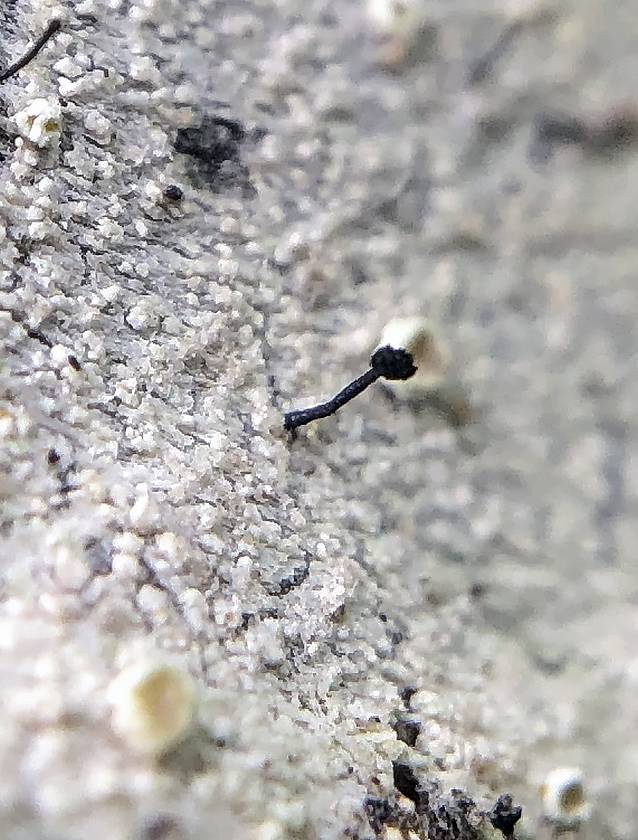
Consortium of Lichen Herbaria
- building a Global Consortium of Bryophytes and Lichens as keystones of cryptobiotic communities -
- Home
- Search
- Images
- Species Checklists
- US States: O-Z >
- US National Parks
- Central America
- South America
- US National Parks
- Southern Subpolar Region
|
Family: Mycocaliciaceae |
Nash, T.H., Ryan, B.D., Gries, C., Bungartz, F., (eds.) 2004. Lichen Flora of the Greater Sonoran Desert Region. Vol 2. Life habit: saprobic or parasitic Thallus: absent; photobiont: absent Apothecia: clearly stalked, black to olivaceous brown or plumbeous; stalk: consisting of dark brown, periclinally arranged hyphae capitulum: obovoid to subspherical exciple: well developed, consisting of dark brown, periclinally arranged hyphae; in some species forming a porrectulate and often thickened margin surrounding a +sunken pore-like disc mazaedium: absent hymenium: covered by a thin layer of dark hyphae, the epithecium asci: cylindrical, 70-250 µm long, formed singly from ascogenous hyphae with croziers, uniformly thickened at the apex, with a single functional wall layer, +persisting until the spores are ejaculated ascospores: pale to dark brown-gray, simple to 3(-7)-septate, ellipsoid, rarely elongate-fusiform, 12-75(-90) x 4-21 µm, uniseriately arranged; wall: moderately to very thick, dark brown, uniform or unevenly thickened and with angular lumina, smooth; apex often pale Secondary metabolites: no substances Substrate: in humid and rather shaded situations on broad-leaved trees or hepatics, usually confined to a single host Geography: mainly in cool temperate to warm temperate areas of the Northern Hemisphere, with one species occurring in New Zealand. Notes: The distinctions between Stenocybe and Phaeocalicium need further clarification. See Tibell (1999) for a fuller descriptions of the genus and species. An additional species, S. tremulicola, has also been reported for California, but probably from outside of the Sonoran region. It also occurs on deciduous trees, but in contrast to S. pullatula, it has a brown instead of black stalk (translucent when wet instead of being opaque) and a larger capitulum (0.2-0.3 vs .08-0.15 mm wide). |
Powered by Symbiota









